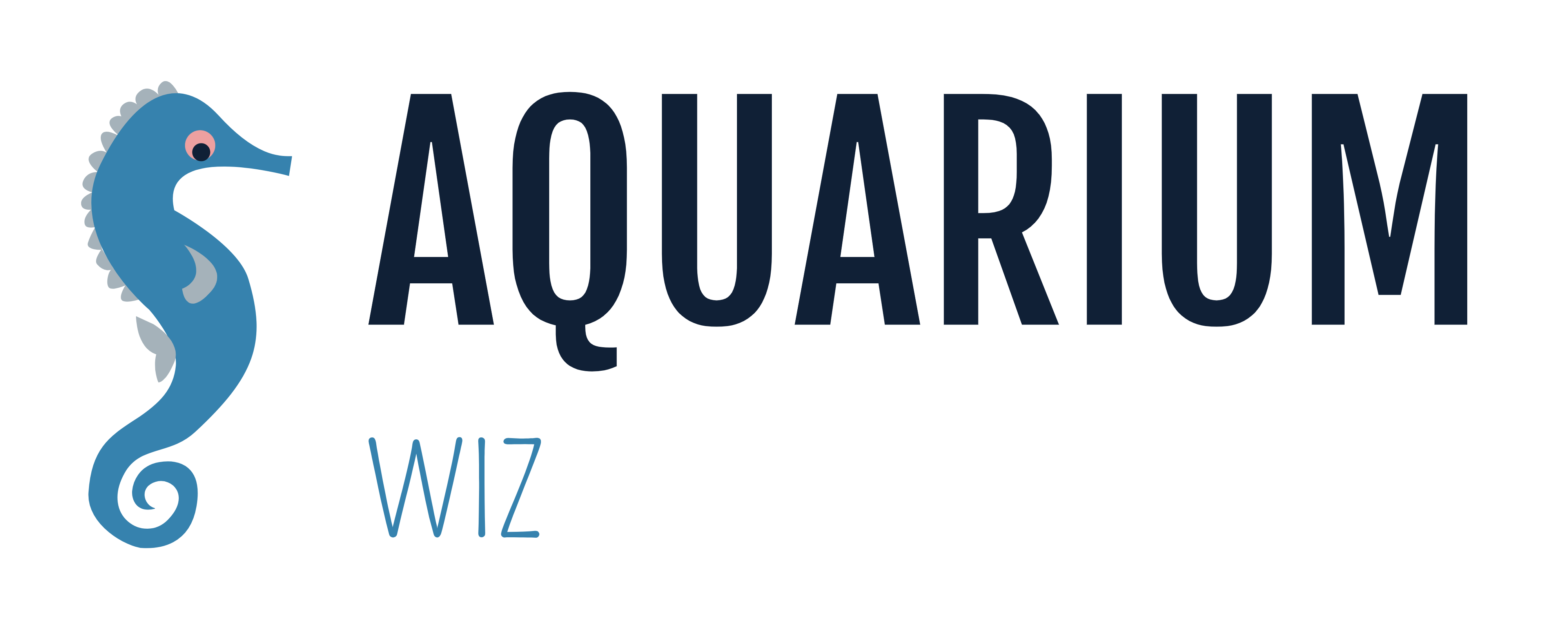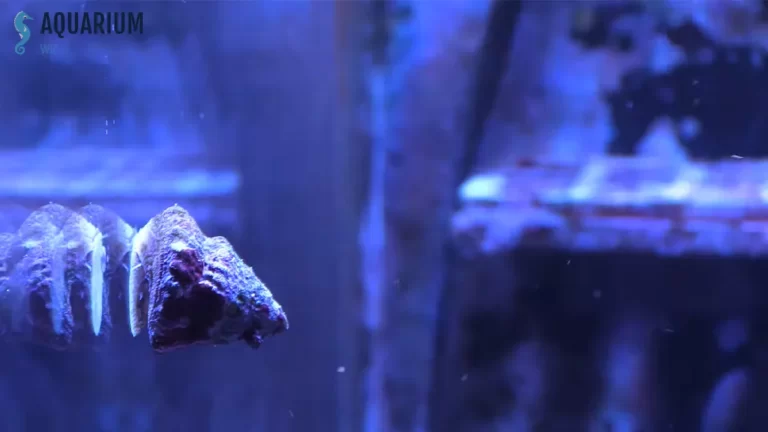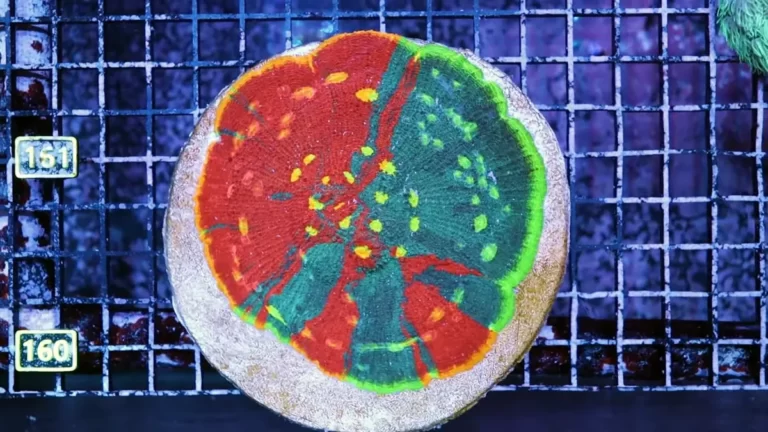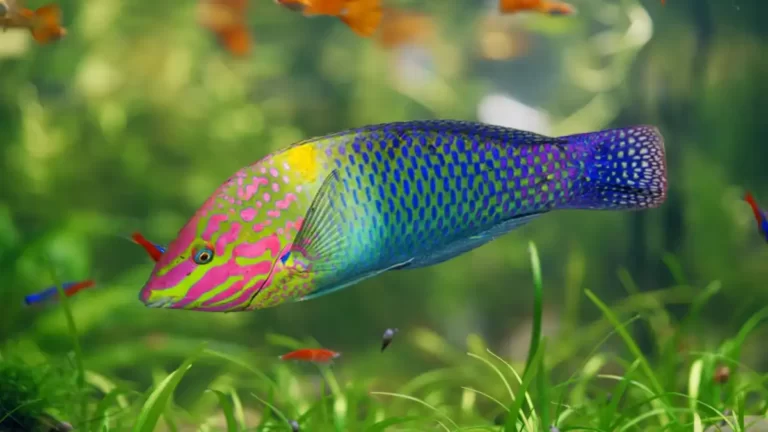Possum Wrasse Care: Tips and Tricks for Happy and Healthy Fish
Possum wrasses are a popular choice among saltwater aquarium enthusiasts due to their stunning colors, peaceful temperament, and manageable size. However, proper care for these fish requires some knowledge and attention to detail. In this article, readers will be provided with an overview of possum wrasse care, covering topics such as their habitat, diet, health, and tank mates.
The article will also address frequently asked questions about possum wrasses and provide information on how to breed them. By the end of this article, readers will have a comprehensive understanding of how to care for possum wrasses and ensure that their aquatic companions thrive in their captivating underwater realm.
Key Takeaways
- Proper care for possum wrasses requires knowledge and attention to detail.
- Possum wrasses are carnivorous and require a varied diet that includes live or frozen foods.
- When choosing tank mates, peaceful species that won’t outcompete or harass the possum wrasse should be selected.
What is Possum Wrasse?
Possum wrasse is a species of fish that requires specific care to thrive in a home aquarium. Understanding their origin, habitat, appearance, and size is essential to provide the best possible care for these beautiful fish.
Origin and Habitat
Possum wrasse, also known as Wetmorella spp., are native to the Pacific Ocean, specifically the waters around Hawaii, Japan, and the Great Barrier Reef. They are commonly found in shallow waters, among coral reefs, and rocky areas. Possum wrasse are known for their vibrant colors and unique body shape.
Appearance and Size
Possum wrasse has an elongated body with a pointed snout and large, expressive eyes. They have beautiful patterns and hues, including shades of blue, purple, yellow, and orange. The males are usually more colorful than females and have a more elongated dorsal fin.
Possum wrasse size can vary depending on the species. The smallest species can grow up to 3 inches (7.6 cm), while the larger species can reach up to 5 inches (12.7 cm). It is essential to consider the size of your aquarium when selecting a possum wrasse. A larger species may require a larger aquarium to ensure they have enough space to swim freely.
Possum Wrasse Care

Tank Requirements
Possum wrasses are active swimmers and require plenty of space to move around. A minimum tank size of 30 gallons is recommended for a single possum wrasse, with additional space needed for each additional fish. They also need plenty of hiding places, such as live rock and caves, to feel secure and reduce stress.
Water Conditions
Possum wrasses are sensitive to changes in water quality and require stable, pristine conditions to stay healthy. The ideal water temperature for possum wrasses is between 75-80°F, with a pH range of 8.1-8.4 and a salinity of 1.023-1.025. Regular water changes and proper filtration are crucial to maintaining good water quality.
Diet and Feeding
Possum wrasses are carnivores and require a varied diet of meaty foods. They will eat a variety of live, frozen, and prepared foods, including brine shrimp, mysis shrimp, krill, and high-quality marine pellets. It’s important to feed them small amounts several times a day, as they have small stomachs and need frequent meals to stay healthy.
Health and Diseases
Common Diseases
Possum wrasses are generally hardy fish and are not prone to many diseases if kept in a healthy environment. However, there are a few common diseases that owners should be aware of:
- Ich (White Spot Disease): This parasitic disease is characterized by small white spots on the fish’s body and fins. It is highly contagious and can quickly spread to other fish in the tank.
- Fin Rot: This bacterial infection affects the fins of the fish, causing frayed or ragged fins. If left untreated, it can lead to the complete destruction of the fins.
- Velvet Disease: This parasitic disease affects the skin of the fish, causing a yellow or gold dust-like appearance on the fish’s body and fins.
Prevention and Treatment
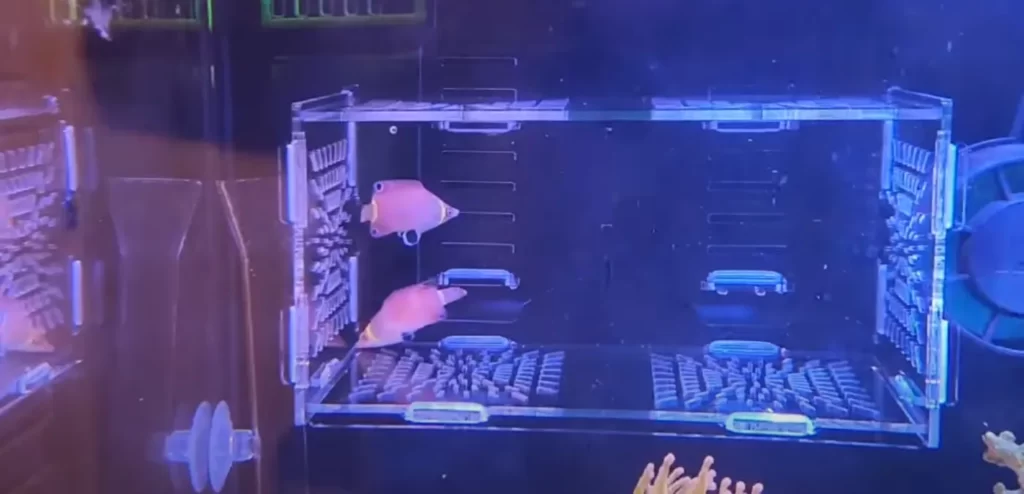
Maintaining a healthy environment in the tank is the best way to prevent diseases in possum wrasses. This includes regular water changes, proper filtration, and a well-balanced diet. New fish should be quarantined for at least two weeks before being introduced into the main tank to prevent the spread of diseases.
Prompt treatment is essential if a disease occurs to prevent it from spreading to other fish in the tank. Treatment options include medication, water changes, and improving the overall health of the fish through proper nutrition and care.
Owners should also be aware of the signs of stress in possum wrasses, such as hiding, loss of appetite, and abnormal swimming behavior, as stress can weaken the immune system and make the fish more susceptible to diseases. Steps should be taken to reduce stress in the fish, such as providing hiding places and reducing aggression from other fish in the tank.
Overall, possum wrasses can be healthy and long-lived fish in a well-maintained aquarium with proper care and attention.
Related Post: Checkerboard Wrasse Care, Tank Setup Breeding, Diseases & Prevention
Breeding Possum Wrasse
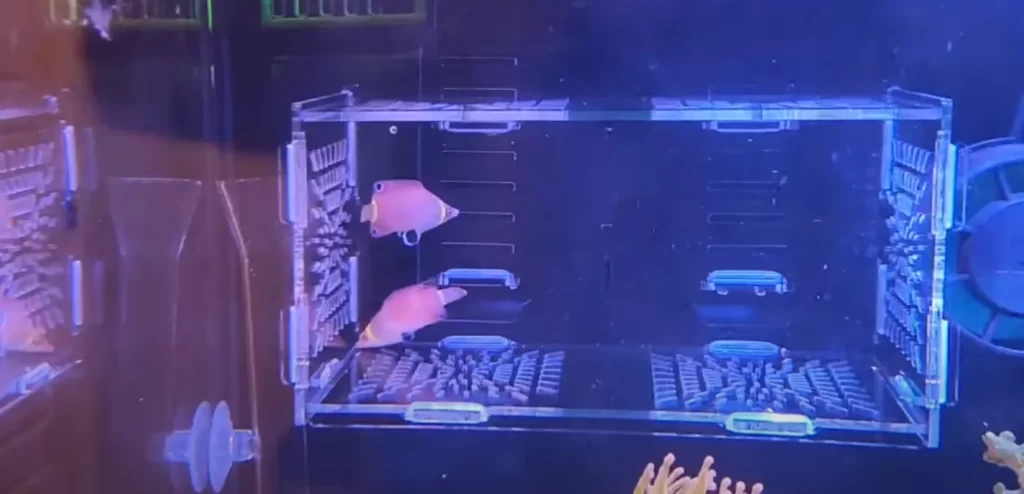
Breeding possum wrasse in a home aquarium requires a lot of patience, dedication, and knowledge about their behavior and breeding habits. However, if done correctly, it can be a very rewarding experience.
Males and Females
Possum wrasses are not sexually dimorphic, which means it is difficult to tell the difference between males and females just by looking at them. The only way to determine the sex of a possum wrasse is by observing their behavior during breeding.
Breeding Behavior
Possum wrasses are protogynous hermaphrodites, which means they start their lives as females and later change into males. When a dominant male is not present in the tank, the largest female will turn into a male. This process can take several months to complete.
During breeding, the male will build a nest using small pieces of rock or coral. The female will then lay her eggs in the nest, and the male will fertilize them. After fertilization, the male will guard the nest until the eggs hatch.
Breeding Tank Setup
To breed possum wrasses, a separate breeding tank is required. The breeding tank should be at least 20 gallons in size and have a sand substrate. Plenty of hiding places, such as rocks and caves, should be provided for the wrasses to lay their eggs.
The water temperature in the breeding tank should be between 78°F and 82°F, and the pH should be between 8.1 and 8.4. A salinity level of 1.023-1.025 and a nitrate level of less than 10 ppm should also be maintained.
Feeding
During breeding, it is important to provide the possum wrasses with a varied diet consisting of high-quality frozen and live foods, such as brine shrimp, mysis shrimp, and small crustaceans. This will ensure that the wrasses have the necessary nutrients to produce healthy eggs.
Related Post: Banana Wrasse Care | Tank Setup, Feeding, Diseases & Prevention
Frequently Asked Questions [FAQs]
What should I feed my possum wrasse?
Possum wrasses are carnivorous and require a varied diet that includes live or frozen foods. They will eat small crustaceans, worms, and other invertebrates. They may also eat small fish if they are hungry enough. It is important to feed your possum wrasse a balanced diet to keep it healthy. Some recommended foods for possum wrasses include brine shrimp, mysis shrimp, krill, and small pieces of fish.
What is the typical price range for a possum wrasse?
The price of a possum wrasse can vary depending on the species and the location where it is purchased. On average, possum wrasses can range from $30 to $100. Some rarer species may cost more. It is important to purchase fish from a reputable dealer to ensure that they are healthy and free from disease.
Are possum wrasses safe for a reef tank?
Possum wrasses are generally considered safe for a reef tank. They are not known to bother corals or other invertebrates. However, it is important to note that some possum wrasses may eat small crustaceans such as shrimp or crabs. If you have a lot of small invertebrates in your tank, it may be best to avoid keeping a possum wrasse. Additionally, possum wrasses can be sensitive to changes in water quality, so it is important to maintain good water conditions in your reef tank.
